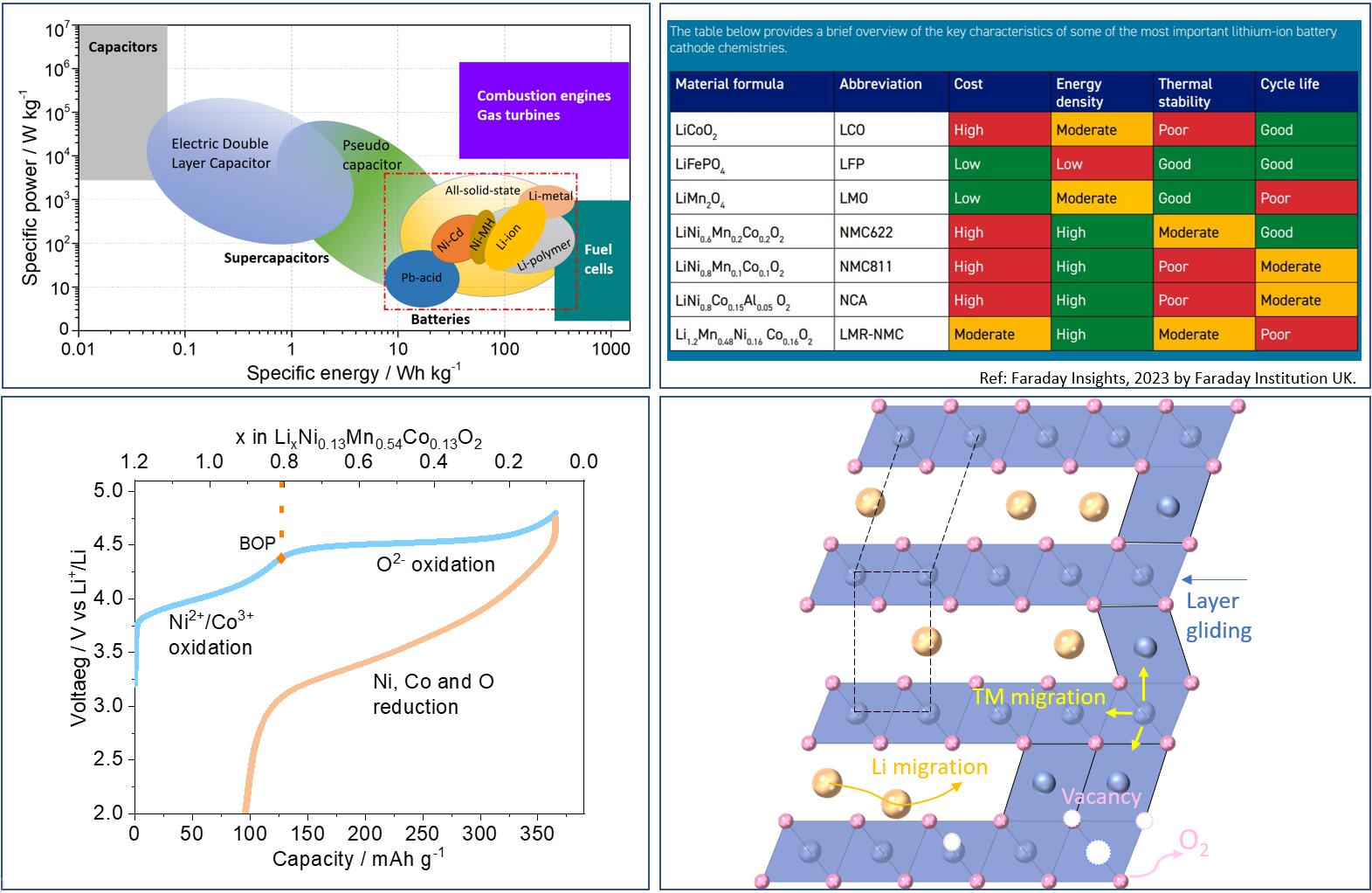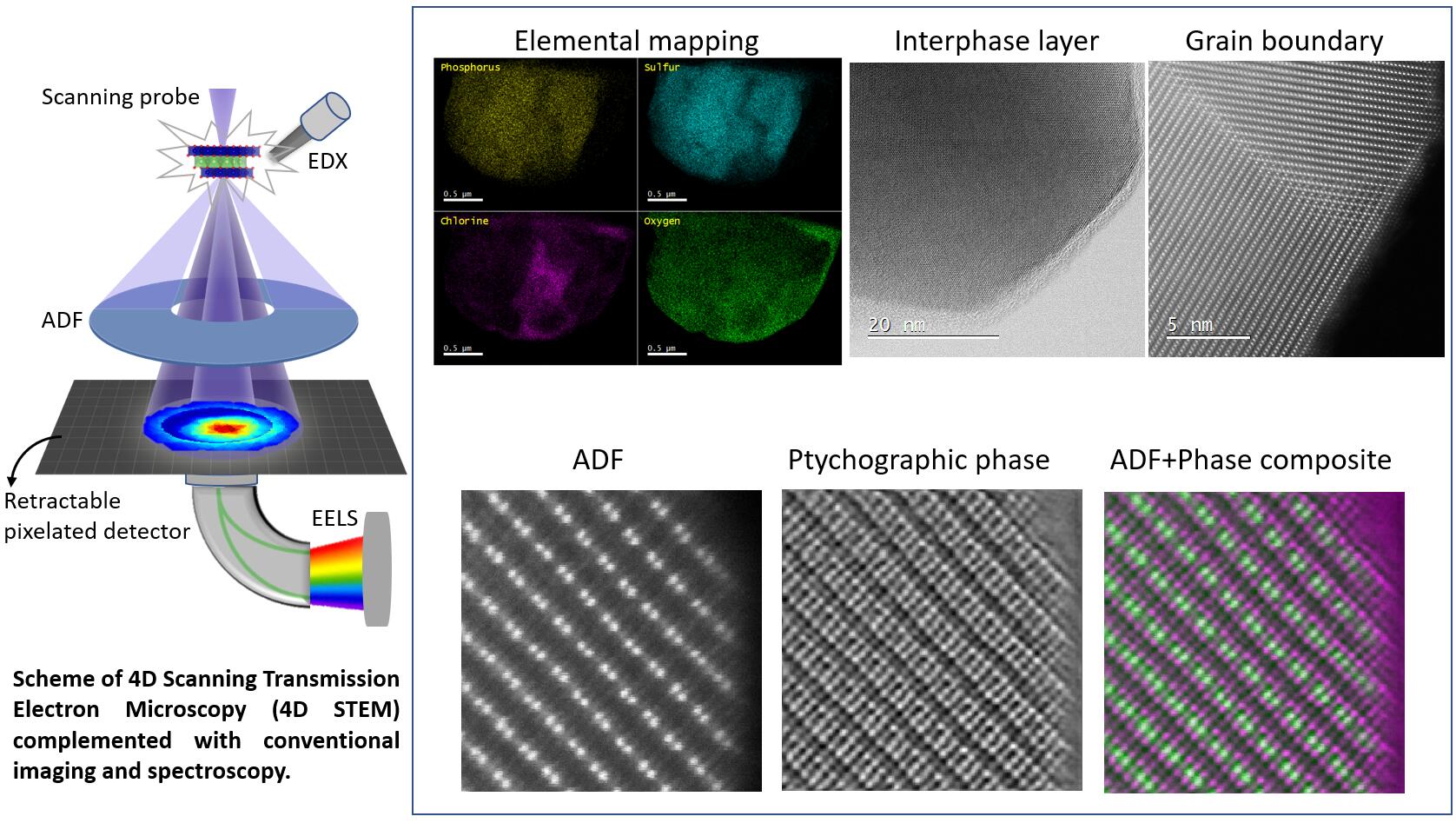#1. Anionic-redox Cathodes of High Capacity and Stability
We aim to deliver a fundamental understanding of challenges in current cathode materials and develop new materials for next-generation Li-ion and solid-state batteries. Our current research primarily focuses on anionic-redox systems, which harness the redox reaction of lattice anions for charge storage beyond conventional cationic redox. This includes studies on O-redox metal oxides and S-redox metal sulfides, mainly in layered structures. Concurrently, we are also active in research on high-nickel oxide, high-voltage manganese oxide, and polyanion systems.
#2. Advanced Transmission Eelectron Microscopy
Our group pioneers advanced transmission electron microscopy (TEM) techniques to answer fundamental materials questions from the atomic scale up. While we maintain expertise in conventional imaging, energy-dispersive X-ray spectroscopy (EDX), and electron energy-loss spectroscopy (EELS), we are particularly invested in developing and applying cutting-edge methods such as 4D STEM ptychography and nanobeam diffraction.#3. Multi-length-scale Understanding Using Synchrotron X-rays and Machine Learning
Our group utilizes synchrotron X-ray spectroscopy and microscopy to investigate materials at various length scales. This approach allows us to develop a comprehensive, multi-length-scale understanding when integrated with our transmission electron microscopy characterisations. Furthermore, we are actively developing machine learning methods to unlock intrinsic material information from our data.

